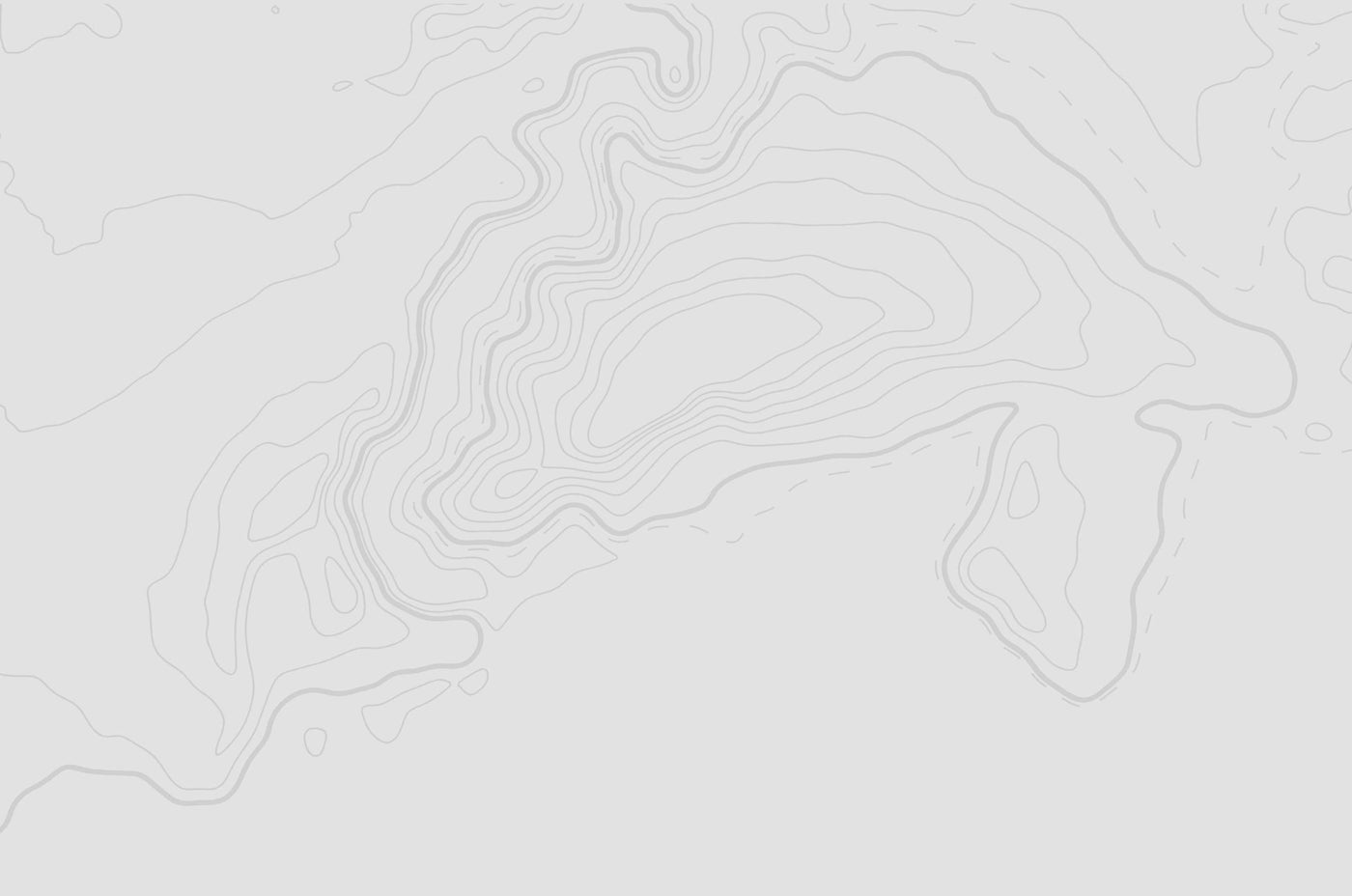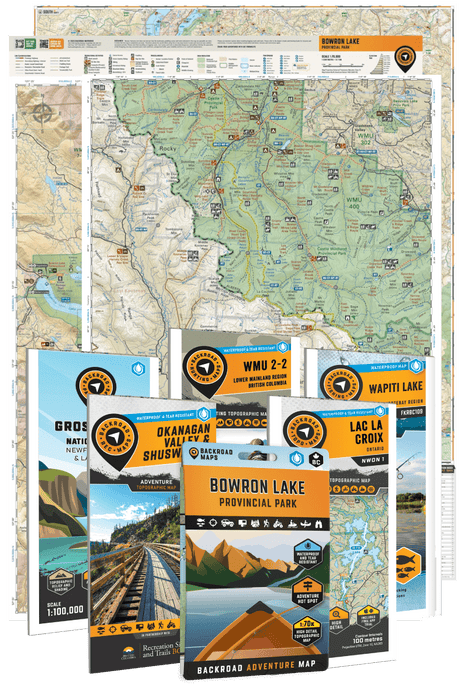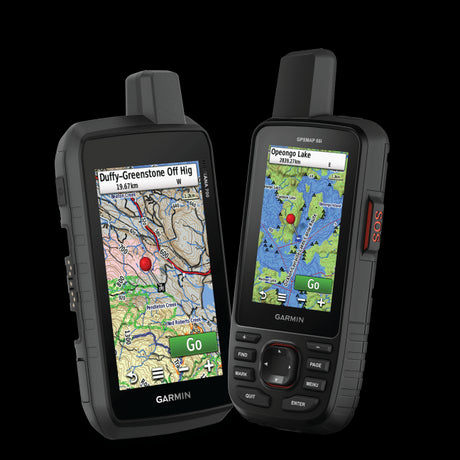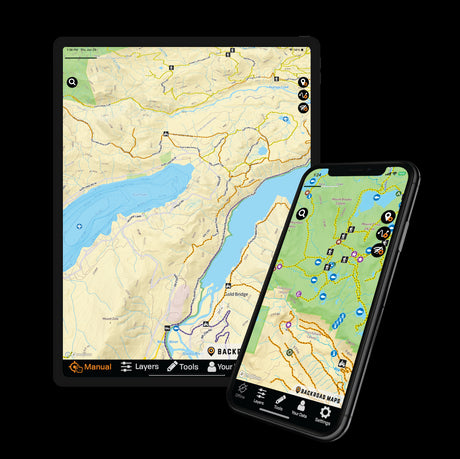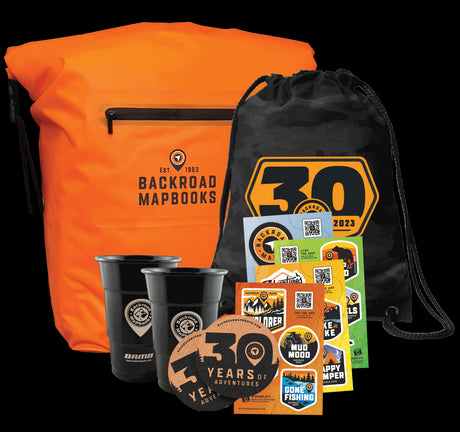Founded in 1989 and situated along the southern edge of the Canadian Shield, Kawartha Highlands (Signature Site) Provincial Park offers year-round backcountry adventure. Covering 37,587 hectares (92,879 ac) of small lakes, wetlands, forests, and rocky barrens, this park is a special place to experience backcountry canoeing and camping. Anglers exploring the lakes by canoe will find lake trout, brook trout, rainbow trout, walleye, large and smallmouth bass, and panfish. And when the snow begins to fall, winter offers those without a paddle the chance to explore by snowshoe and cross-country ski, especially along the routes carved out by snowmobiles.
We are pleased to announce our new Kawartha Highlands (Signature Site) Provincial Park topographic adventure map. This recreation map highlights all the paddling routes, backcountry campsites, paddling access points, and portages for canoeists, campers, anglers, and backcountry enthusiasts. The easy-to-read adventure map is packed with all the information you need to explore this large and beautiful area.
Shown at a 1:50,000 scale and available in a durable, water-resistant paper map format or a large-format wall map, it features our industry-leading topographic contours and relief shading, as well as roads, padding routes and trails, and ATV and snowmobile areas outside the park. Included on the map are Apsley, Buckhorn, Burleigh Falls, Catchacoma, Anstruther Lake, Buzzard Lake, Chandos Lake, Gold Lake, Mississagua River, Rathbun Lake, Serpentine Lake, Shark Lake, Sucker Lake, Turtle Lake, and more! No other map on the market covers all of Kawartha Highlands Provincial Park with this level of recreational detail.
Adventure Opportunities Await
Kawartha Highlands Provincial Park is primarily known as a canoe-tripping destination. There are six recommended canoe routes ranging from easy to moderate in difficulty, and over one hundred backcountry campsites located within the park, each with a fire ring, picnic table, and privy toilet. To assist in booking the right backcountry site, our Kawartha Highlands Park Map lists the site numbers for each campsite, making it easy to reserve the perfect spot.
The Bottle Lake/Sucker Lake Canoe Route covers approximately 4 km (2.5 miles) and is ideal for novice paddlers as it has just two short portages. Access is off the Beaver Lake Road at Bottle Creek, with the scenic route leading to Bottle Lake and Sucker Lake and then back, taking about four to five hours. The Crab Lake Route begins from the Wolf Lake access point on Anstruther Lake Road, leading 4 km (2.5 miles) through Wolf Lake before a 140 metre portage takes paddlers into Crab Lake.

The 18 to 22 km (11-13.5 mile) Long Lake Loop is a rugged trip beginning at Access Point 2 on Long Lake Road. Best suited to experienced paddlers as there is some whitewater and nine portages, the route passes through many small lakes including Long Lake, Loucks Lake, Compass Lake, Stoplog Lake, Cherry Lake, Triangle Lake, and Cox Lake.
Covering approximately 21 km (13 miles), the Serpentine Loop has eight portages including the longest in the park at 1.4 kilometres in length. Leaving Access Point 5 at Anstruther Lake, the journey traverses several small lakes including Anstruther Lake, Rathburn Lake, North Rathburn Lake, Serpentine Lake, and Copper Lake.

With a put-in at Coon Lake, the 8 km (5 mile) return Southern Ponds Route features four portages each way and explores some of the smaller lakes in the southeast corner of the park, offering some great fishing, swimming, and wildlife viewing opportunities.
Those looking for a challenge can explore the 21 km (13 mile) Mississauga River Route. Featuring eighteen portages, the route plunges through granite gorges in the southwest corner of the park with Class I and II whitewater. In the spring, many of the portages can be run in the high water. This route does require a shuttle vehicle.

While not known for hiking trails, there are a few backcountry routes, some of which lead to campsites typically used by canoe trippers. These include the 1.6 km (1 mile) Mississauga River Loop, the 4.7 km (3 mile) out-and-back Cloudy Lake Trail, the 6.4 km (4 mile) out-and-back Bottle Lake Trail, the 4.2 km (2.6 mile) out-and-back Crab Lake Trail, and the 10 km (6 mi) out-and-back Copper Lake Trail. In addition, an 11 km (6.8 mile) route travels from Beaver Lake Road to backcountry sites on Sucker Lake.
Birders flock (no pun intended) to this park as well. Common loons, Great Blue herons, and osprey are frequently spotted on the lakes while the rock barrens attract whip-poor-will, common nighthawk, scarlet tanager, and eastern towhee. Many species of warblers, vireos, and sparrows are found in the park as well. Larger mammals roaming the landscape include black bears, moose, deer, wolves, and coyotes.
Of course, the lakes hold plenty of fish species, and with seventeen of the lakes in the park stocked with a variety of fish (brook trout, lake trout, rainbow trout, and splake), angling success is all but assured. Also, look for good-sized largemouth and smallmouth bass up to 2.3 kg (5 pounds) by working the weed beds in the lakes.

Visitors should be aware that hunting is permitted in the park, so have your orange on in the fall. The park falls within WMU 60 which is home to white-tailed deer, black bear, wild turkey, and moose in smaller numbers.
Winter is a special time when quiet solitude abounds as you make your way into the backcountry wilderness. Following one of the snowmobile routes which cut through the park including Trails 503, 506 or E211 will make snowshoeing or skiing easier before breaking out into virgin snow to set up camp. Just be aware, camping is not permitted within 30 metres of the nearest portage or shoreline from December 1 to March 31.
Trip Planning
Permits are required for park use and reservations (strongly recommended) can be made up to five months in advance by visiting ontarioparks.com or calling 1-888-668-7275. The park office is located in Bancroft and if you have trip-planning questions, reach out to the staff by calling 613-332-3940, extension 261. They are always willing to help.
Reaching the Park
Conveniently located within the heart of Central Ontario, the park is easily accessed from Highway 36 and 507 in the west and Highway 28 in the south and east. There are nine access points; off Coon Lake Road north of Burleigh Falls in the south, right off Highway 36 or via Mississauga Lake Dam Road or Beaver Lake Road to the west, and Anstruther Lake Road or Long Lake Road from the east. Beaver Lake Road offers two put-in/take-out locations while there are three found at Loon Call, Wolf, and Anstruther Lakes along Anstruther Lake Road. However, be aware that all the access points in the park offer limited facilities and parking capacity.

No matter which adventure you choose to partake in, the Kawartha Highlands Provincial Park Adventure Map is the perfect tool for trip-planning and carrying in your pocket, backpack, dry bag, or tucked under the seat of your canoe. Plan your next adventure and find your way to your destination with this brand-new map that is part of the lineup of our popular Parks & Destination Map series. And be sure to check out our Cottage Country Backroad Mapbook and BRMB Maps App to aid in planning your next adventure in this beautiful park.

